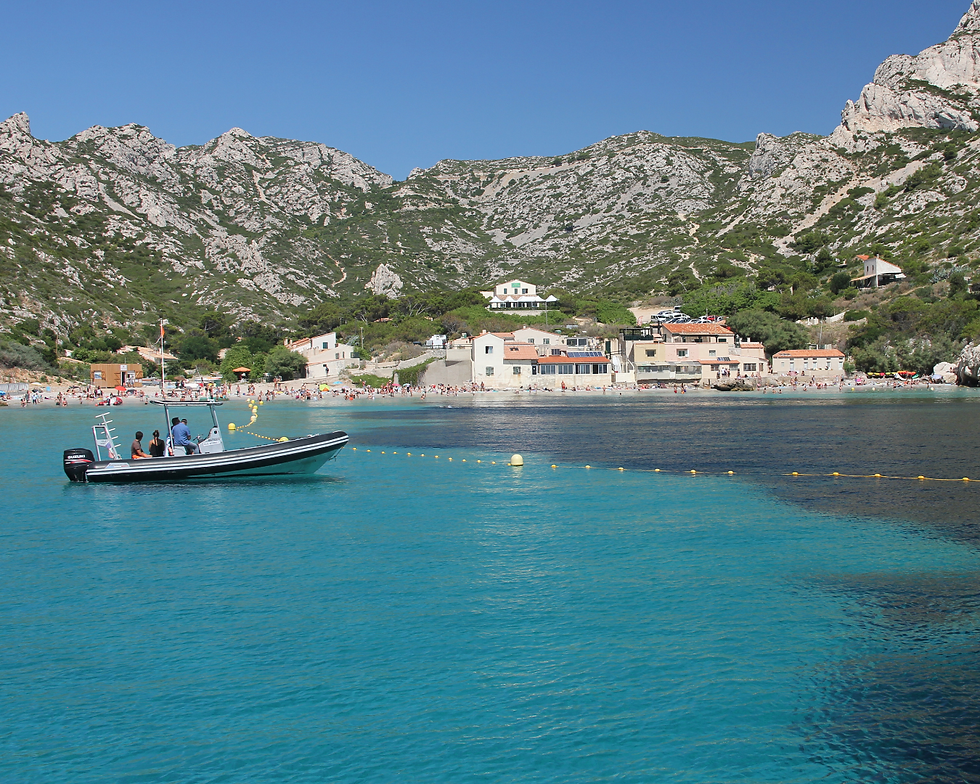Guiding the Eye: Rule of Thirds in Coastal Composition (Weekly Challenge #174)
- Natalia C.

- Jul 25
- 4 min read
This week we’re heading to the North Island of New Zealand, where windswept cliffs rise boldly above endless blue waters and graceful lighthouses keep watch over rugged shorelines. Our reference set, generously provided by our co-host Ida @walkingnewzealand, captures multiple viewpoints along this breathtaking coast — from golden ridgelines and sculpted rock shelves to quiet, sandy coves below.
Each photo offers a different angle on the drama of land meeting sea, and they’re full of compositional opportunity. Whether you're drawn to winding paths, stark cliff faces, or the timeless elegance of a lighthouse on the horizon, there’s something to explore in every image.
It’s the perfect backdrop for revisiting one of the most essential tools in a landscape artist’s toolkit: the rule of thirds. A subtle shift in framing can transform a scene — and this week’s challenge is all about experimenting with placement, proportion, and balance to create compelling compositions.
Make sure to check out our dedicated painting tips post on this topic:👉 Rule of Thirds in Art – How to Use It in Landscape Painting
Focus Point Overview: Composition / Rule of Thirds
Good composition is often invisible — it “feels right” even when you can’t explain why. This week, we challenge you to make it intentional. The rule of thirds is a guideline that divides your canvas into 9 equal parts using two horizontal and two vertical lines. Where those lines meet is where our eyes naturally go — and placing your main elements along these intersections can help your painting feel balanced, engaging, and dynamic.
In these photos, there’s plenty of compositional inspiration: tilted paths, layered cliffs, distant lighthouses, and diagonal coastlines. Your goal is not to simply copy what’s there but to rethink the placement of major forms. You can crop, shift the horizon, or reframe the viewpoint to create stronger visual impact.
Use this challenge to ask yourself:
What is the focal point of my scene?
How can I support it with shape, value, and direction?
Where do I want the viewer's eye to travel?
Analyzing This Week’s Reference Photos
Now let’s dive into the reference photos of this week.
Photo 1: Lighthouse on the Cliff
A white lighthouse stands tall on a sloping headland, overlooking calm turquoise waters and a rugged coastline. There’s a deep perspective leading into the bay.

Challenge: The lighthouse is almost centered. To avoid stiffness, experiment with shifting its position.
Questions:
Could you move the horizon higher or lower?
Would a panoramic crop emphasize the headland better?
Tips:
Use diagonals of the cliff to lead the eye toward the lighthouse
Consider placing the lighthouse on an upper third intersection
Add cloud patterns or a boat for scale and interest
Photo 2: Tourists on the Ridge
A dramatic edge of rock with ocean below, and a small group of people approaching the lighthouse. Great storytelling potential.

Challenge: There’s a strong center of interest, but the photo’s composition is very symmetrical.
Questions:
Could you tilt the viewpoint or crop to build tension?
How might you balance the mass of the rocks with open sky?
Tips:
Use the path as a leading line
Break symmetry with shadows or clouds
Make figures secondary to the cliff line to guide the eye
Photo 3: Low Tide Below the Bluff
A grounded viewpoint from the beach below, with dramatic rock formations and a faint lighthouse above. Feels moody and enclosed.

Challenge: There’s a lot of visual weight on the bottom.
Questions:
Could you raise the horizon or exaggerate the cliffs?
Would emphasizing the vertical format work better?
Tips:
Use the dark rocks to anchor the foreground
Push color contrast to separate layers
Keep detail sparse in the distance to imply scale
Photo 4: Golden Cliffs at Dusk
The lighthouse peeks from a golden ridge bathed in evening light. The composition flows diagonally and feels cinematic.

Challenge: The small lighthouse might get lost without careful contrast.
Questions:
Should the cliff line dominate the canvas?
Where should you crop to emphasize the scale?
Tips:
Highlight warm vs cool light to model the form
Keep the foreground shadowed to pull the eye upward
Try a wide horizontal crop to enhance drama
The North Island’s coastal cliffs give you permission to experiment — with viewpoint, format, and focal point. Don’t worry about perfection. Let composition be your quiet guide as you play with placement, proportion, and perspective. This is a great week to loosen up, make bold cropping choices, and rethink how you place things on your canvas.
Join us by sharing your piece using #landscapeartclub174 on Instagram by Thursday, 31 July 2025 at 23:59 CET. For more composition ideas, check out the Reference Library!
Ready to make the view your own? We can’t wait to see it.



Comments